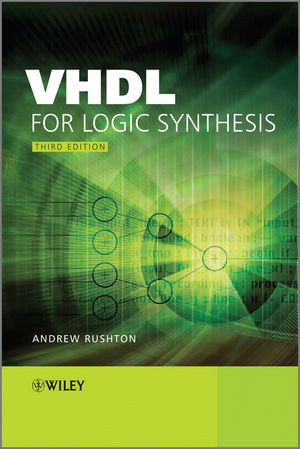

Most ebook files are in PDF format, so you can easily read them using various software such as Foxit Reader or directly on the Google Chrome browser.
Some ebook files are released by publishers in other formats such as .awz, .mobi, .epub, .fb2, etc. You may need to install specific software to read these formats on mobile/PC, such as Calibre.
Please read the tutorial at this link: https://ebookbell.com/faq
We offer FREE conversion to the popular formats you request; however, this may take some time. Therefore, right after payment, please email us, and we will try to provide the service as quickly as possible.
For some exceptional file formats or broken links (if any), please refrain from opening any disputes. Instead, email us first, and we will try to assist within a maximum of 6 hours.
EbookBell Team

4.7
26 reviewsMany engineers encountering VHDL (very high speed integrated circuits hardware description language) for the first time can feel overwhelmed by it. This book bridges the gap between the VHDL language and the hardware that results from logic synthesis with clear organisation, progressing from the basics of combinational logic, types, and operators; through special structures such as tristate buses, register banks and memories, to advanced themes such as developing your own packages, writing test benches and using the full range of synthesis types.
This third edition has been substantially rewritten to include the new VHDL-2008 features that enable synthesis of fixed-point and floating-point hardware. Extensively updated throughout to reflect modern logic synthesis usage, it also contains a complete case study to demonstrate the updated features.
Features to this edition include:
Focused specifically on logic synthesis, this book is for professional hardware engineers using VHDL for logic synthesis, and digital systems designers new to VHDL but familiar with digital systems. It offers all the knowledge and tools needed to use VHDL for logic synthesis. Organised in themed chapters and with a comprehensive index, this complete reference will also benefit postgraduate students following courses on microelectronics or VLSI/ semiconductors and digital design.Content:
Chapter 1 Introduction (pages 1–5):
Chapter 2 Register?Transfer Level Design (pages 7–17):
Chapter 3 Combinational Logic (pages 19–35):
Chapter 4 Basic Types (pages 37–61):
Chapter 5 Operators (pages 63–84):
Chapter 6 Synthesis Types (pages 85–150):
Chapter 7 Std_Logic_Arith (pages 151–165):
Chapter 8 Sequential VHDL (pages 167–189):
Chapter 9 Registers (pages 191–211):
Chapter 10 Hierarchy (pages 213–241):
Chapter 11 Subprograms (pages 243–277):
Chapter 12 Special Structures (pages 279–299):
Chapter 13 Test Benches (pages 301–326):
Chapter 14 Libraries (pages 327–336):
Chapter 15 Case Study (pages 337–367):